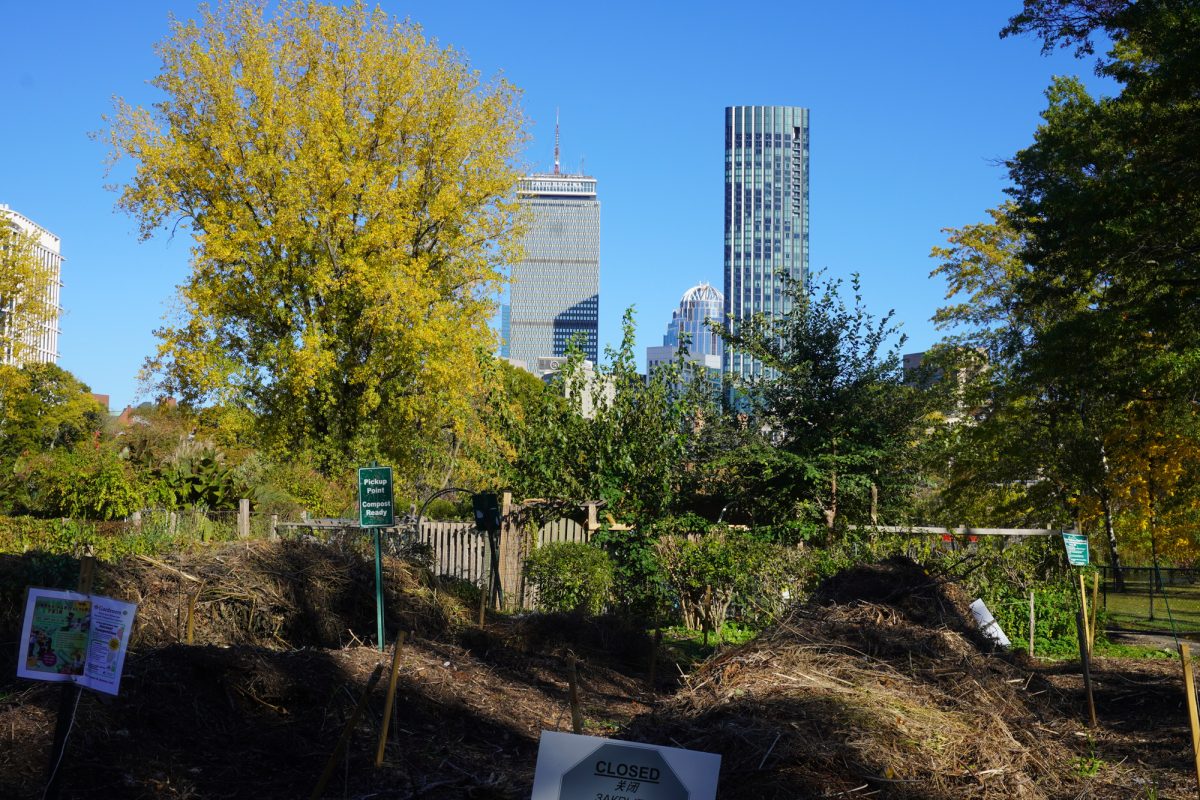On my way to work the other day, as I made my way to an intersection, a very angry middle-aged cyclist yelled at me for being in the bike lane. He claimed it was dangerous for me to be there, and that it forced him to be in the same lane as cars, but at no point did he leave the bike lane while passing me.
The level of aggression this man exhibited was incongruous with a 6:48 a.m. commute to work on Commonwealth Avenue. We were both struggling to make it up a mediocrely steep hill near a Dunkin’ Donuts, a pizza place where pizza somehow tastes gentrified and a suspicious-looking tanning salon.
But the more I thought about his aggression, the more I understood it.

While his anger could have stemmed from his stunted masculinity and repression, fear probably also played a role in why he yelled at some random student at 6 a.m.
Boston is considered by many to be one of the most walkable cities in the country, but it is also a city with a huge traffic problem.
Boston’s Emergency Medical Services and the Boston Police Department use two different systems to record traffic accidents. This means city officials do not have clear data on where crashes are happening and what intersections or streets require additional safety measures.
The particular intersection the cyclist and I were on is one of the scariest to cross — that I’ve encountered, at least.
Boston University officials call this particular intersection — between Commonwealth Avenue and Essex Street — “the knuckle.” According to a 2015 study conducted by a Northeastern University Urban Studies student, more than 1,000 people cross this intersection at peak hour. Commonwealth Avenue — the main road of this intersection — was the site of 75% of bicycle crashes on campus, according to 2015 data from the Boston University Police Department.
This intersection is also one of many in Boston that operates under “concurrent walk signaling.” Under this practice, pedestrians are given the green light to walk at the same time cars are given the green light to make turns.
Almost 300 crosswalks in Boston utilize this kind of signaling, according to an investigation conducted by Northeastern’s School of Journalism. Though Massachusetts law states cars must yield to pedestrians, not all drivers adhere to these rules.
In 2013, BU student Christopher Weigl, a graduate student in the College of Communication, was traveling in the bike lane when he was struck and killed by a truck making a turn in the intersection between Commonwealth Avenue and St. Paul’s Street.

Moreover, though Massachusetts state law makes it illegal for motorists to hit pedestrians on crosswalks, the same does not apply for cyclists.
This issue becomes even more complicated with skateboarders, who exist in the nebulous space between pedestrians and cyclists.
“The word ‘pedestrian’ shall include a person in or on any conveyance, other than a bicycle, constructed and designed for propulsion by human muscular power, as well as including a person on foot,” according to Section 18A of Massachusetts state law.
Under this ruling, skateboarders are considered pedestrians and are thus entitled to use the crosswalk and the sidewalk. But I think it is illogical to expect skateboarders to only skate on the sidewalk.
It’s not as simple as relegating the sidewalk as a free space for everyone who isn’t on a bike.
Riding a skateboard on the sidewalk is not feasible if you want to keep other pedestrians safe. Skaters average three times the speed of the normal pedestrian — a speed difference that could lead to serious injuries.
Skating on the road is often the best option for skaters, but it’s also incredibly dangerous. Out of the 147 skateboarder deaths that occured in the U.S. between 2011 and 2015, nearly all happened on the road.
This is why utilizing the bike lane provides a safer alternative for skaters and these lanes should be considered a shared space.
Cyclists should stop pretending they are on “The Amazing Race” and simply slow down a bit when they see a skater.
But the real enemy here is not aggressive bald cyclists — it’s insufficient protections for pedestrians and cyclists.
That cyclist and I were fighting over a miniscule stretch of road, while cars had the luxury of more than four lanes.
These roads, as massive as ones such as Commonwealth Avenue, take up an immense amount of space in cities. The same space could be better used to create safer pathways for pedestrians or more sustainable transportation systems.
Of course, nothing is as simple as banning cars. A robust and affordable public transportation system needs to be developed in order for any of this to work — otherwise, how would people get around? But it is worth considering how much of our space and our time is devoted to accommodating cars.
Ultimately, a city that prioritizes cars over people on mechanical wheels or on foot doesn’t allow pedestrians to enjoy the full extent of their city. Perhaps that’s a good thing in a time of a pandemic, but it just makes the morning commute all the more depressing.

























































































































